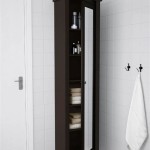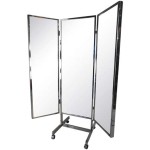```html
Shabby Chic Mirror Frame: A Guide to Style, Selection, and Upcycling
The shabby chic aesthetic, characterized by its distressed finishes, antique charm, and celebration of imperfections, has gained significant popularity in interior design. A key element in achieving this look is the shabby chic mirror frame. These frames not only serve a functional purpose by reflecting light and creating the illusion of space but also act as decorative focal points, adding character and vintage appeal to any room.
Shabby chic mirror frames differ significantly from modern, minimalist designs. They often feature ornate detailing, layers of paint that have been intentionally distressed, and a sense of history and lived-in elegance. The style emphasizes comfort, informality, and the beauty of imperfection, making these frames a versatile addition to various interior design schemes, from bedrooms and bathrooms to living rooms and hallways.
Key Features of Shabby Chic Mirror Frames
Several distinct features define the shabby chic mirror frame. Understanding these characteristics is crucial for selecting the right frame to complement a specific interior design or for creating a shabby chic frame from scratch.
Distressed Finish: The hallmark of a shabby chic frame is its distressed finish. This is typically achieved through techniques like sanding, layering paint, and applying antiquing glazes. The goal is to create the appearance of age and wear, revealing underlying layers of paint and exposing the frame's raw material in certain areas. The distressing process should appear natural and authentic, rather than forced or artificial.
Ornate Detailing: Many shabby chic frames incorporate intricate carvings, moldings, and embellishments. These details, often inspired by antique or vintage designs, add visual interest and a touch of elegance. Common motifs include floral patterns, scrollwork, and classical architectural elements. The presence of ornate detailing elevates the frame beyond a simple functional object, transforming it into a decorative art piece.
Light and Neutral Color Palettes: While not exclusive, shabby chic frames frequently feature light and neutral color palettes. Whites, creams, pale pinks, and soft blues are common choices. These colors enhance the frame's vintage appeal and contribute to the overall sense of lightness and airiness that characterizes the shabby chic aesthetic. Pastel hues and washed-out tones are also popular options, adding a subtle touch of color without overwhelming the design.
Materials and Construction: Shabby chic frames can be constructed from a variety of materials, including wood, metal, and resin. Wood is a popular choice due to its versatility and ability to be easily distressed. Metal frames, particularly those made from wrought iron or cast iron, can add a touch of industrial chic to the overall design. Resin frames offer a lightweight and durable alternative, allowing for intricate detailing at a lower cost. Regardless of the material, the frame's construction should prioritize quality and durability, ensuring that it can withstand the test of time.
Selecting the Right Shabby Chic Mirror Frame
Choosing the right shabby chic mirror frame involves careful consideration of several factors, including the size and shape of the mirror, the existing décor of the room, and the desired overall aesthetic. A well-chosen frame can enhance the mirror's visual impact and contribute significantly to the room's overall design.
Size and Shape Considerations: The size and shape of the mirror should be the primary consideration when selecting a frame. A frame that is too small will make the mirror appear insignificant, while a frame that is too large will overwhelm the mirror and detract from its reflective properties. As a general guideline, the frame's width should be proportionate to the size of the mirror, creating a balanced and harmonious look. The shape of the frame should also complement the shape of the mirror. For example, a rectangular mirror would pair well with a rectangular or oval frame, while a round mirror would be best suited for a round or square frame.
Matching Existing Décor: The shabby chic mirror frame should complement the existing décor of the room. Consider the color palette, furniture styles, and overall aesthetic when making a selection. If the room features a predominantly neutral color scheme, a frame with a subtle pastel hue or a distressed white finish would be a suitable choice. If the room incorporates more vibrant colors, a frame with a bolder color or a more ornate design could be used to create a focal point. It's important to ensure that the frame's style and color palette harmonize with the rest of the room, creating a cohesive and visually appealing space.
Functionality and Placement: The intended function and placement of the mirror should also be taken into account. A mirror intended for use in a bathroom should be resistant to moisture and humidity. A mirror intended for use in a hallway should be placed at a height that allows for comfortable viewing. A full-length mirror would require a larger and more substantial frame than a smaller vanity mirror. Consider the practical aspects of the mirror's placement and function when selecting a frame, ensuring that it is both aesthetically pleasing and functionally appropriate.
Frame Material and Durability: The chosen frame material should align with the mirror’s intended use and the environment where it will be placed. Wood frames, while aesthetically pleasing, may require additional treatment to prevent moisture damage in bathrooms. Metal frames offer durability and a unique aesthetic but can be heavier. Resin frames provide a lightweight and cost-effective alternative, suitable for various environments. Consider the material's durability, resistance to environmental factors, and overall maintenance requirements when making a selection.
Upcycling and Creating a Shabby Chic Mirror Frame
Creating a shabby chic mirror frame is a rewarding DIY project that allows for customization and personalization. Upcycling an existing frame is an even more sustainable and cost-effective approach. This involves transforming an old or unwanted frame into a unique and stylish piece that reflects individual taste and creativity.
Sourcing Materials: The first step in creating a shabby chic mirror frame is to source the necessary materials. This includes an existing frame (either new or upcycled), sandpaper, primer, paint (in desired colors), antiquing glaze (optional), brushes, and any decorative embellishments. Flea markets, antique stores, and online marketplaces are excellent sources for finding inexpensive or vintage frames that can be transformed. Ensure the frame is structurally sound and free from significant damage before beginning the project.
Preparing the Frame: Before applying any paint or finishes, the frame must be properly prepared. This involves cleaning the frame thoroughly to remove any dirt, dust, or grease. Sanding the frame's surface will create a better adhesion for the primer and paint. If the frame has a glossy finish, sanding is particularly important. Apply a coat of primer to the frame to create a smooth and uniform surface for the paint. Allow the primer to dry completely before proceeding to the next step.
Applying Paint and Distressing Techniques: Once the primer has dried, apply the base coat of paint in the desired color. Allow the paint to dry completely before applying additional layers. To achieve the distressed look, use sandpaper to gently remove paint from certain areas of the frame, such as edges, corners, and raised details. This will reveal the underlying layers of paint and create a sense of age and wear. Experiment with different sanding techniques to achieve the desired level of distressing. An antiquing glaze can be applied to further enhance the frame's vintage appearance.
Adding Embellishments: Adding decorative embellishments can further personalize the shabby chic mirror frame. This can include gluing on floral appliques, attaching vintage buttons, or adding decorative moldings. The possibilities are endless, and the embellishments should reflect individual taste and creativity. Ensure that the embellishments are securely attached to the frame and that they complement the overall design.
Sealing and Finishing: Once the paint, distressing, and embellishments are complete, apply a sealant to protect the frame and enhance its durability. A clear coat of varnish or lacquer will provide a protective layer that will prevent the paint from chipping or fading. Allow the sealant to dry completely before hanging the mirror. The resulting shabby chic mirror frame will be a unique and stylish addition to any room, reflecting individual creativity and adding a touch of vintage charm.
```
Shabby Chic Wall Mirror Antique Baroque Style Double Vanity Farmhouse Bathroom Tan Gold White Wash Wood Framed

Antique White Shabby Chic Mirror Ornate Decorative Wall Florence New

Beautifully Framed Bathroom Mirrors Shabby Chic Mirror Frame Farmhouse

Beautifully Framed Bathroom Mirrors Hallstrom Home

25 Pretty Shabby Chic Decoration Ideas For Creative Juice Dresser Decor Living Room Bathroom

French Shabby Chic Wall Mirror Blue Wood Framed Bathroom Vanity Extra Large Medium Small

Blue And Silver Mirror On Easel Country House Decor French Bathroom Shabby Chic Bedrooms

Silver Baroque Rococo Wall Mirror Shabby Chic Rectangle Wood Frame French Style

Distressed Black Shabby Chic Mirror Ornate Decorative Wall Florence

Shabby Chic White Solid Wood Framed Large Free Standing Cheval Mirror Love Home Living








